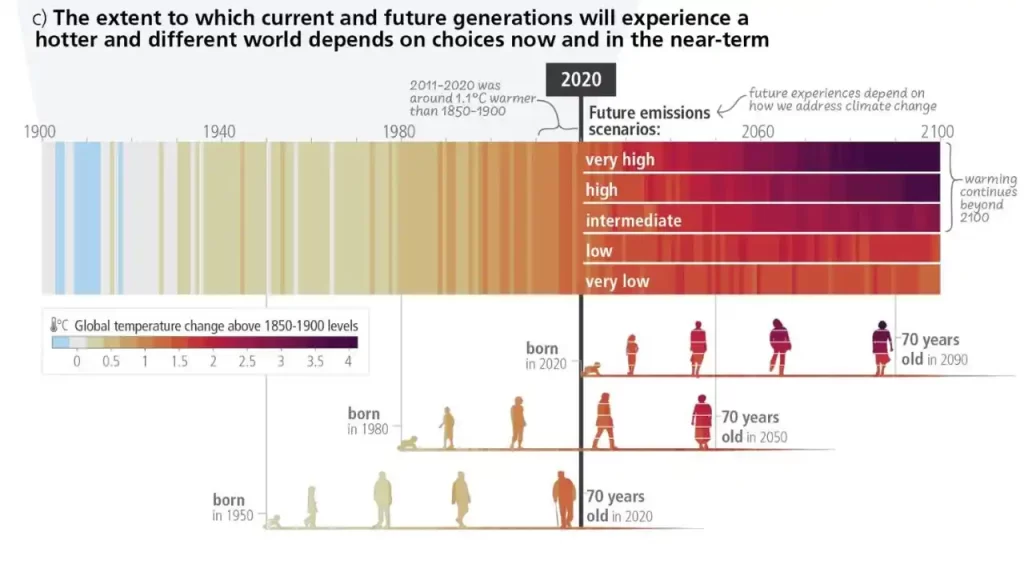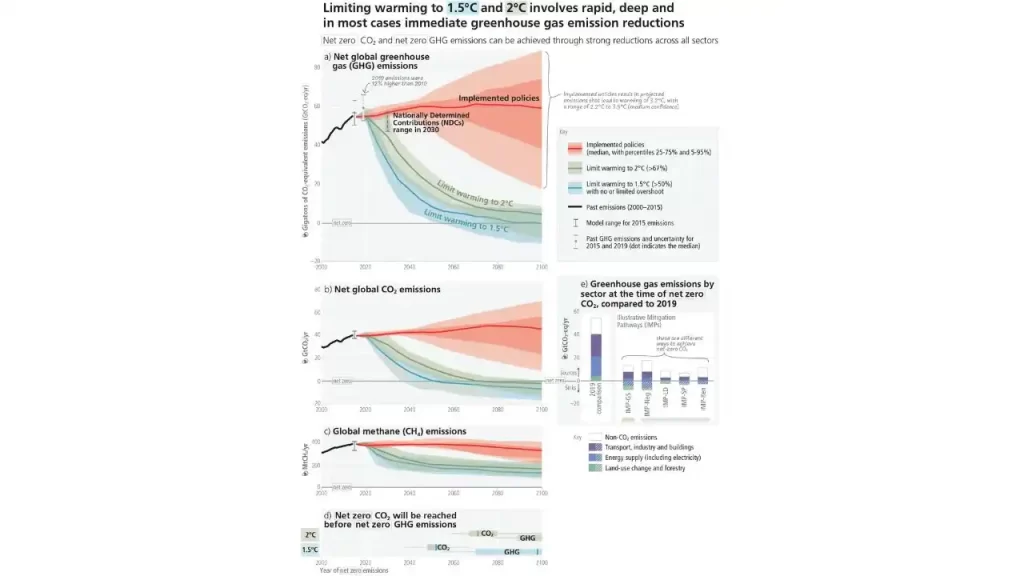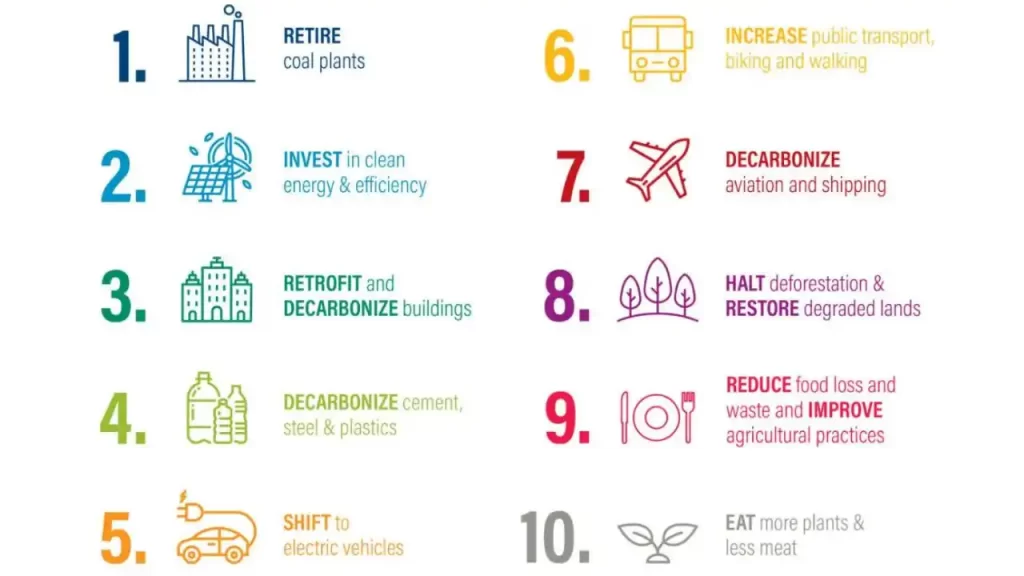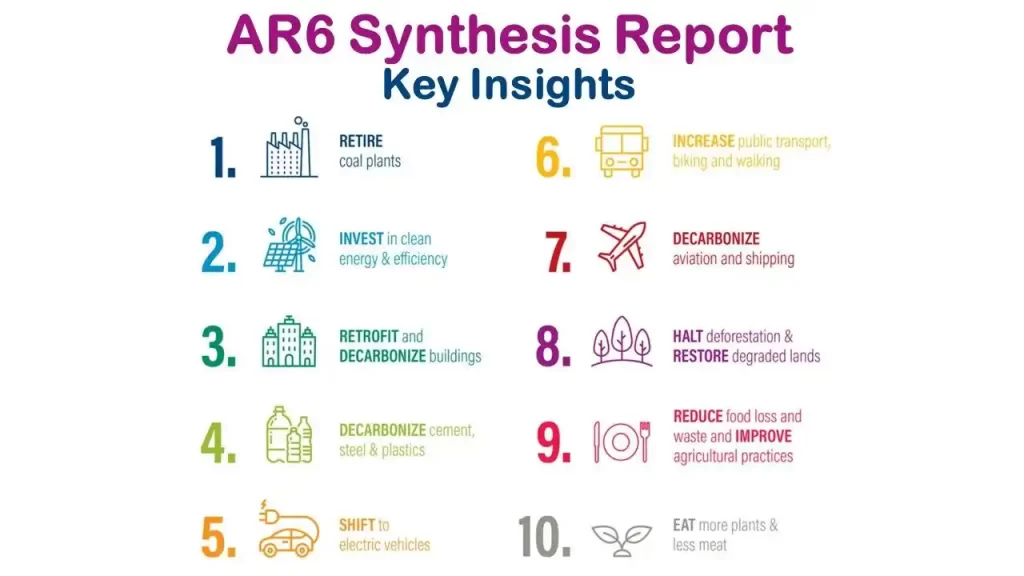The latest IPCC AR6 Synthesis Report has sent shockwaves through the scientific community and beyond, revealing that the world is hurtling towards a catastrophic climate tipping point faster than previously thought. In this blogpost, we will dissect the latest IPCC AR6 Synthesis Report.
We will list key findings from the report and will present a way forward to deal with the urgent environmental issue of climate change.
What is IPCC AR6 Synthesis Report?
The Intergovernmental Panel on Climate Change Synthesis Report is the final part of the IPCC’s sixth assessment cycle.
This report integrates the main findings from the three working group reports, which have been published previously [WG1 (August 2021). WG2 (February 2022), and WG3 (April 2022)]. The report summarizes findings from all of the IPCC’s 6TH Assessment Cycle reports.
In addition to these reports, this synthesis report also takes into account other special reports such as the Global Warming of 1.5C, Climate change and land, and the ocean and cryosphere in a changing climate (SROCC) to mention a few.
The Synthesis Report is aimed at informing and highlighting the consequences of climate change to policymakers, stakeholders, and the general public.
This document plays an important role in shaping climate policies and serves as a basis for the United Nations Framework Convention on Climate Change (UNFCCC) negotiations.
Initially, the report was planned to publish in September 2022, but due to management reasons it was delayed. It was finally released on 20th March 2023.
The Current State of Climate Change: Findings from the IPCC AR6 Synthesis Report
The latest report has made many shocking conclusions. For your consideration, we have listed some of the major findings of the AR6 Synthesis Report.
- Humans are solely responsible for the 1.1°C of temperature rise since the industrial revolution
- Anthropogenic climate change is already affecting every region around the world with widespread loss and damage to both nature and people
- Reaching net-zero GHG emissions primarily requires deep reductions in CO2, methane, and other GHG emissions, and implies net-negative CO2 emissions. Carbon dioxide removal (CDR) will be necessary to achieve net-negative CO2 emissions.
- Global warming is expected to reach 1.5C between 2030 and 2035 and is projected to increase by 3.2°C by 2100
- We need to achieve net-zero emissions by 2050 to maintain a 50-50 chance of limiting warming to 1.5 degrees Celsius.
- To keep within 1.5°C limit, emissions must be reduced by at least 43% by 2030 compared to 2019 levels and at least 60% by 2035. This is the decisive decade to make that happen.
- If the emission levels stay at their current level, we will exhaust the 50% chance of 1.5°C in 9 years. And if we begin to cut emissions then to stay within the carbon budget for a 50-50% chance of not exceeding 1.5°C, we need to achieve carbon emissions by 2040. As shown in the figure below.

- Emissions must be reduced by 11% year to stay under 1.5°C of warming, and by closer to 5% for 2°C. When equity is taken into consideration, the majority of wealthy countries must achieve zero CO2 emissions between 2030 and 2035
- At sustained warming levels between 2C and 3C, the Greenland and West Antarctic ice sheets will irrevocably melt over multiple millennia
- By 2100, the global mean sea level will have risen above the likely range of two meters
- The poorest and most vulnerable populations, especially those in Africa and the least developed nations, will be disproportionately affected by losses and damages, perpetuating poverty.
How Much Hotter Will the World Be at the End of this Century?

The report says that nearly in all scenarios, the world will get hotter in the near term i.e., from 2021 to 2040.
However, the issue of how hot the world will get at the end of this century will depend on our choices. “Future warming”, explains the synthesis report, “will be driven by future emissions.” Therefore, the amount of warmer depends on our climate action.

It is unanimously agreed that to stop global warming we need to achieve net-zero emissions. The report reveals that if we succeed in limiting global emissions, then global warming is expected to temporarily exceed the 1.5C mark by no more than 0.1C and return back to 1.4C by the end of this century.
The report also depicts the worst-case scenario, where the global emissions are high, in this case, warming could reach 4.4C in 2100.
The Path Forward: Turning the IPCC Synthesis Report’s Findings into Action

“There is a brief and rapidly closing window of opportunity to secure a liveable and sustainable future for all”, the report concluded with high confidence.
On the issue of what needs to be done to stop climate change, the synthesis delivers a blunt message. “Limiting human-caused warming requires net-zero carbon emissions.” While a net-negative emissions target would result in a gradual decline in surface temperature.
The climate time-bomb is ticking but the latest IPCC report shows that we have the knowledge and resources to tackle the climate crisis
Secretary-General Antonio Guterres
Reaching net-zero goals require rapid, immediate, and prompt action. But the cost for this transition is huge. As per estimates, the net-zero transition will require $125 trillion by 2050 in climate investment.
While this level of investment is yet to achieve but climate investment is gaining momentum. In 2021, the world spent around $755 billion on low-carbon energy technologies, which is up 27% from the year before.
The report has listed a number of strategies to tackle climate change that are both technically viable and cost-effective. Some of key strategies and solutions proposed by the report are listed below.

You may also read our guide on the Top 7 ways of mitigating climate change
Conclusion
In conclusion, the IPCC AR6 Synthesis Report serves as a stark reminder of the challenges we face. Nevertheless, it also offers optimism that, with focused work and cooperation, we may avoid the most catastrophic consequences.
The report underlines that we have the ability to change course even as it provides a grim picture of our current trajectory.
With rapid, immediate, and collective action, we can slow global warming down. And strive towards a more sustainable future for future generations.
To confront the climate issue, it is more important than ever for all of us to work together. We must hold our leaders responsible and demand bold, scientific policies that put social justice and environmental sustainability first.
Every one of us has a role to play, from making small, everyday changes in our own lives to advocating for larger-scale, systemic transformation.
Although the challenge is great, we can and must rise to face it by working together. The future of our planet and the welfare of all of its inhabitants depend on the decisions we make now, so the moment to act is now.
Let’s work together to make the world cleaner, greener, and more just for current generations as well as future ones.
Read the full report, here
You may also read:

